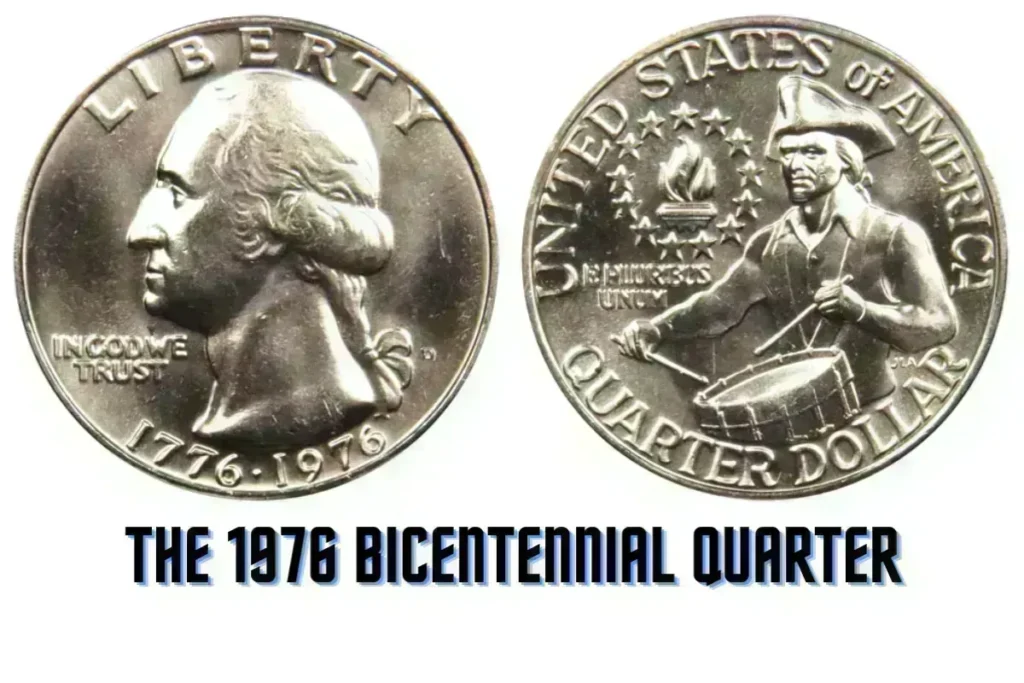The 1976 Bicentennial quarters are special coins minted to celebrate America’s 200th anniversary. These quarters have become highly collectible,
with some worth up to $750. Let’s explore what makes these coins valuable and how you can tell if you have one that’s worth a lot.
What Makes the 1976 Bicentennial Quarter Special?

The 1976 Bicentennial quarter was issued to mark the 200th anniversary of American independence. Unlike regular quarters, this coin features a unique design on the reverse side.
It displays a Colonial drummer and a bell, which symbolize America’s history. The obverse side still has George Washington’s portrait, but the entire design makes these quarters stand out.
Types of 1976 Bicentennial Quarters

There are two main types of 1976 Bicentennial quarters:
- Regular Strike Quarters: These are the standard coins minted for general circulation. They are the most common and not worth as much.
- Silver Proof Quarters: Minted for collectors, these coins are made of 40% silver. They have a shiny finish and are rarer than regular strike quarters.
How to Identify Valuable 1976 Quarters
To determine if your 1976 quarter is valuable, check the following:
- Mint Mark: Look for a mint mark on the coin. A “D” means it was minted in Denver, while a “P” indicates Philadelphia. Silver proof quarters don’t have mint marks.
- Condition: The coin’s condition affects its value. Coins in excellent condition (graded as MS-65 or higher) are worth more.
- Silver Content: Silver proof quarters contain silver, making them more valuable than regular quarters.
How Much Are 1976 Quarters Worth?

Most 1976 Bicentennial quarters are worth only a quarter or slightly more. However, silver proof quarters in mint condition can fetch up to $750, especially if they are graded highly. The value also depends on the demand among collectors and any unique features of the coin.
Where to Sell 1976 Bicentennial Quarters
If you think you have a valuable 1976 quarter, you can sell it to coin dealers or through online auction sites. Make sure to get your coin appraised by a professional to ensure you get a fair price.
The 1976 Bicentennial quarters are not just historical keepsakes but also potentially valuable collectibles. By understanding the different types of these quarters and knowing how to identify valuable ones,
you can appreciate their worth and make the most of your collection. Whether you have a regular quarter or a rare silver proof, these coins hold a special place in American numismatics.
1. What is the value of a regular 1976 Bicentennial quarter?
Regular 1976 Bicentennial quarters are generally worth face value, but in mint condition, they might be worth a bit more.
2. How can I tell if my 1976 quarter is a silver proof?
Silver proof quarters have a shiny, mirror-like finish and contain 40% silver. They usually come in a special case.
3. Where can I sell my 1976 Bicentennial quarter?
You can sell it to coin dealers, at coin shows, or through online auction sites. Make sure to get it appraised first.
4. What is the difference between a regular and a silver proof quarter?
Regular quarters are made of copper and nickel, while silver proof quarters are made of 40% silver, giving them a distinct finish.
5. How do I check the mint mark on my 1976 quarter?
Look on the back of the quarter, just below the bell and drummer design. A “D” or “P” will indicate where it was minted.










